primary production and eutrophication - 7.10.24
1/20
There's no tags or description
Looks like no tags are added yet.
Name | Mastery | Learn | Test | Matching | Spaced |
|---|
No study sessions yet.
21 Terms
Eutrophication
Nutrient increase stimulating aquatic plant growth.
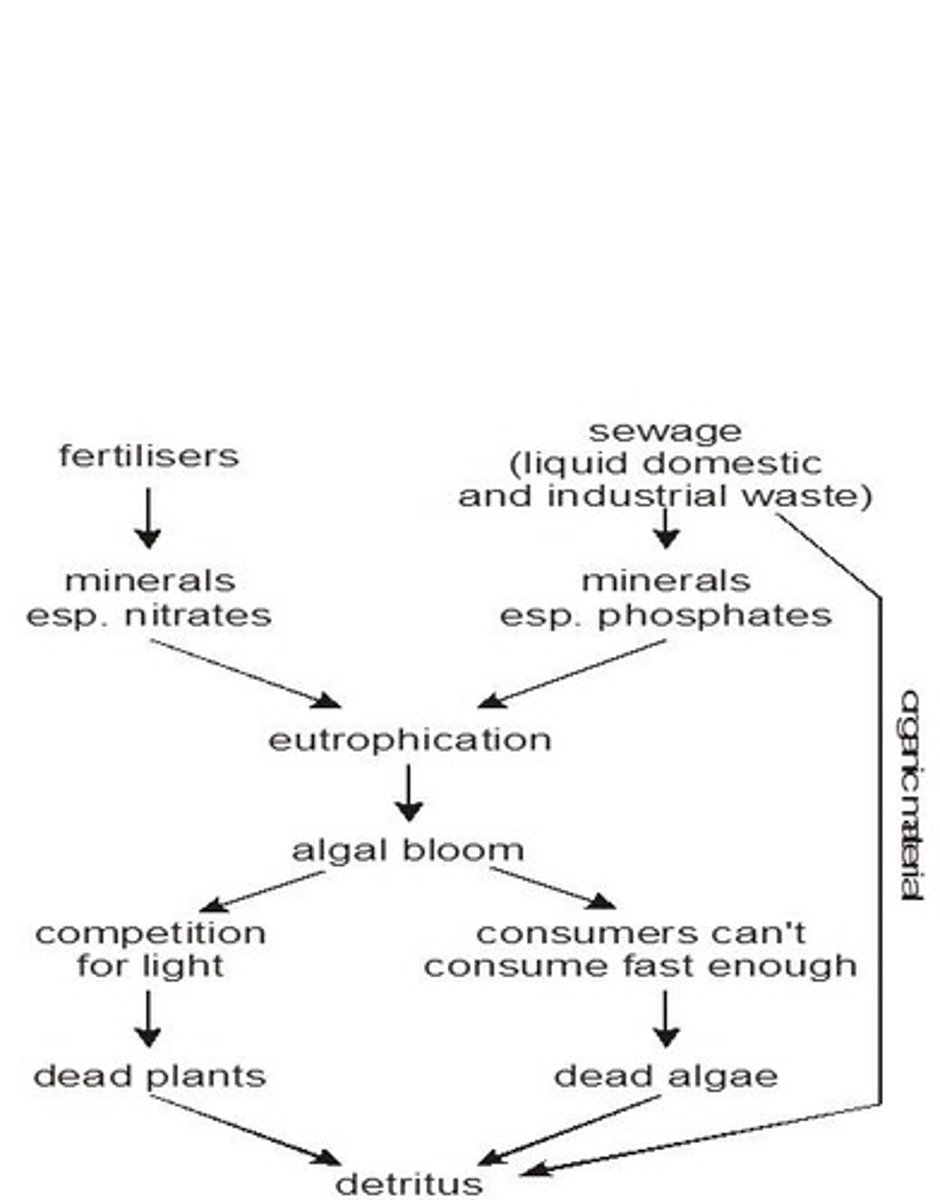
Primary Production
Rate of organic matter generation in ecosystems.
Nutrients
Essential elements, mainly nitrogen (N) and phosphorus (P).
Chl a
Chlorophyll a, indicator of phytoplankton biomass.
Eutrophic State
High nutrient concentrations, poor water clarity.
Natural Eutrophication
Gradual aging of lakes from sediment accumulation.
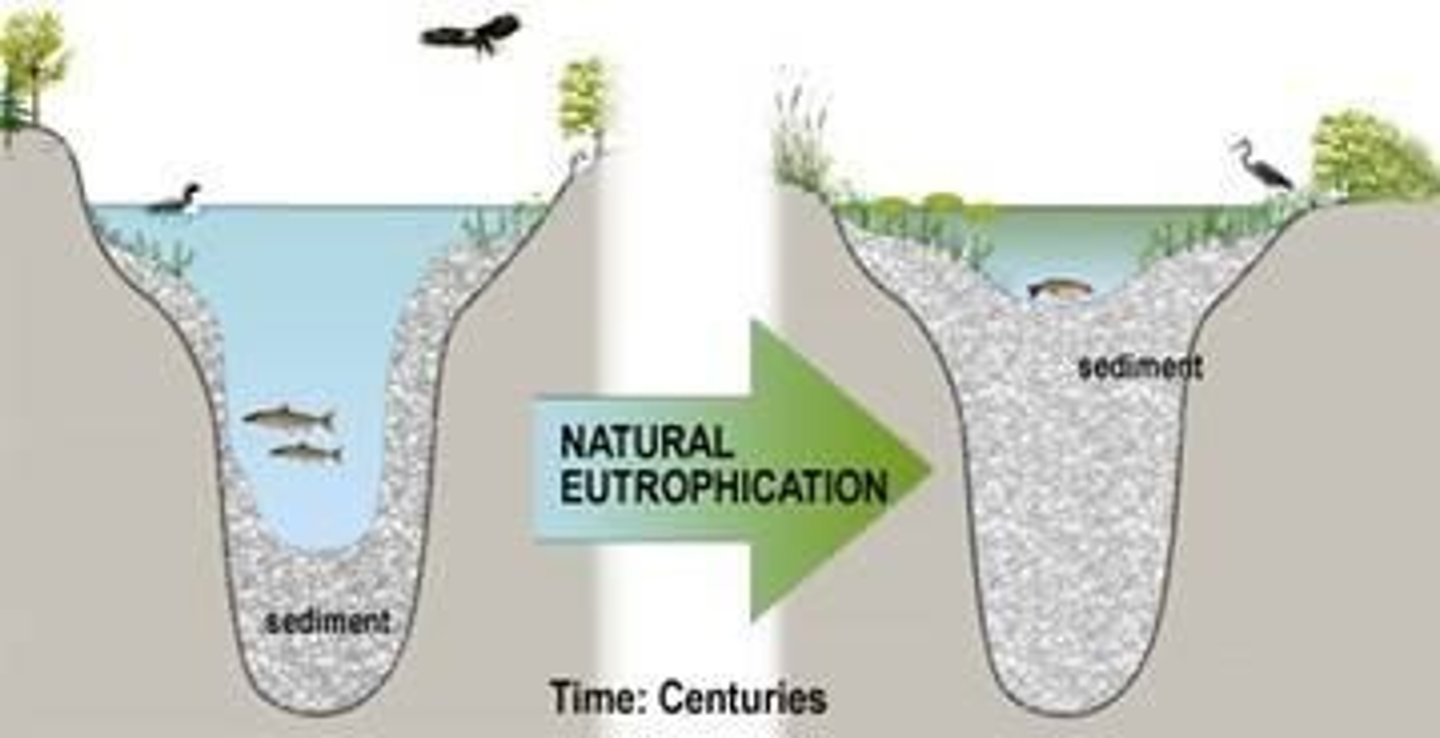
Human-induced Eutrophication
Accelerated nutrient input from agricultural runoff.
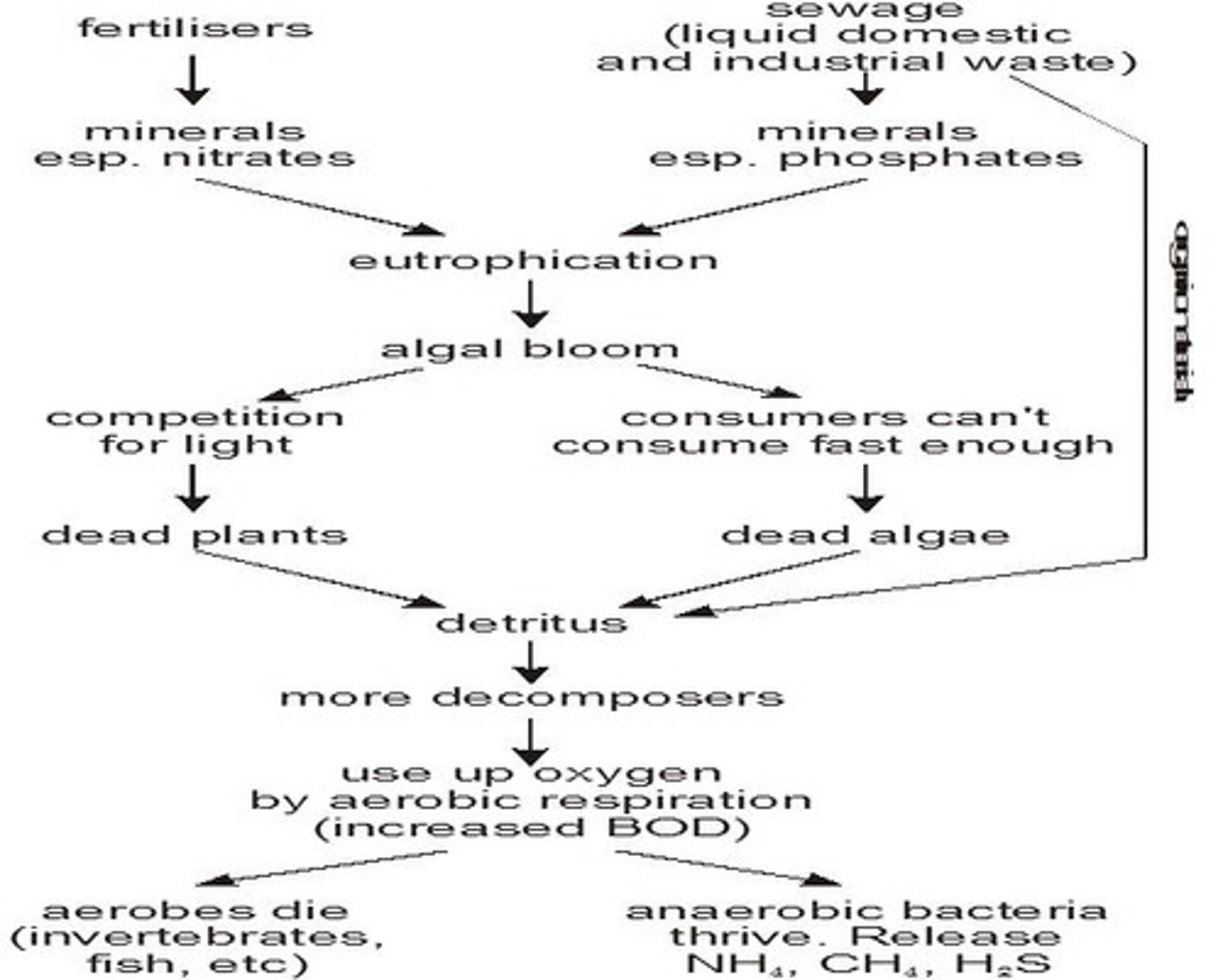
Hypoxia
Low oxygen levels in aquatic environments.
Dead Zones
Areas with insufficient oxygen for aquatic life.
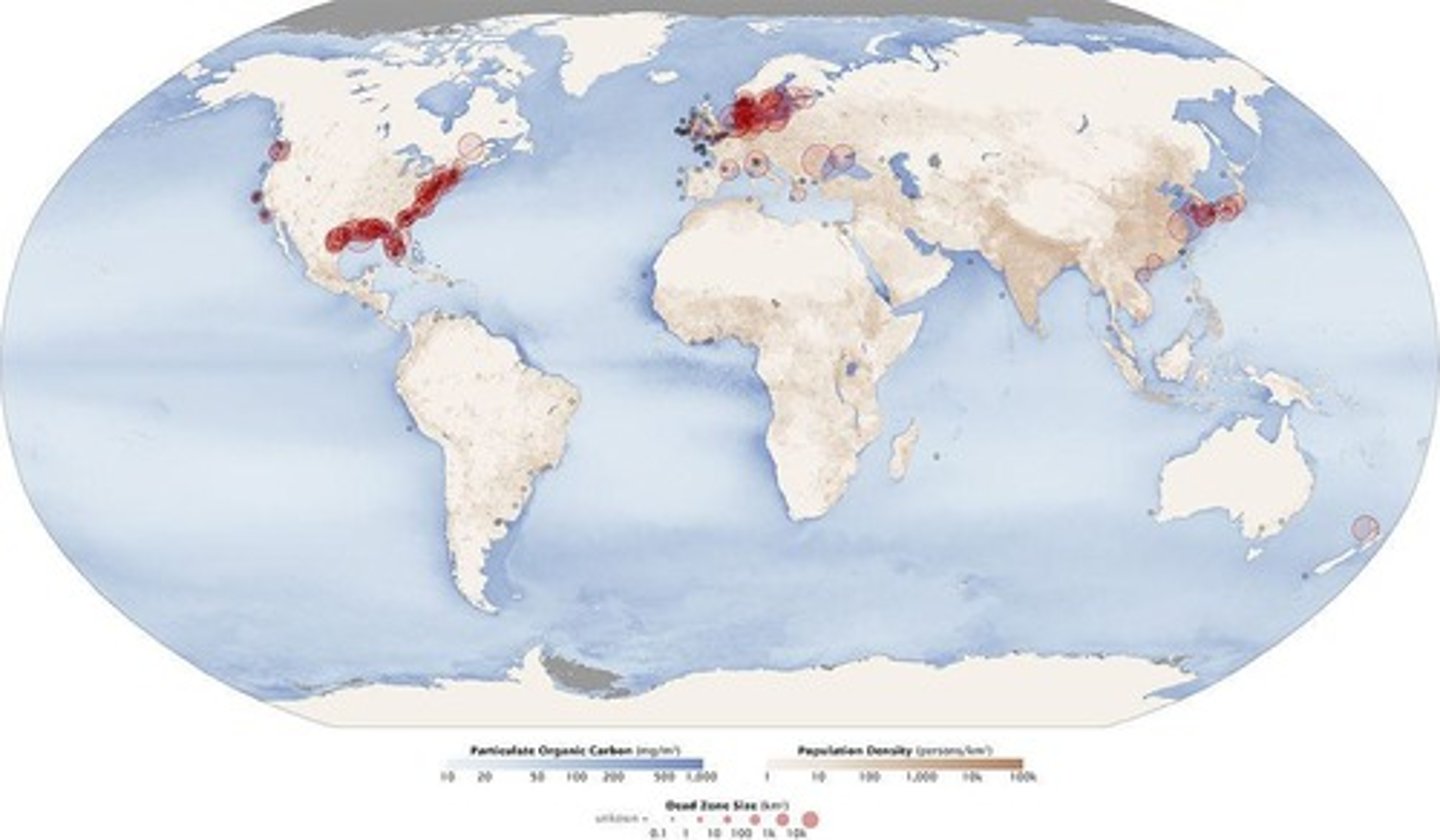
Harmful Algal Blooms
Toxic phytoplankton blooms affecting ecosystems.

Coastal Upwelling
Nutrient-rich waters brought to the surface.
Pycnocline
Layer preventing oxygen from penetrating deeper waters.
Bio-control
Using fish introductions to manage eutrophication.
Ecological Impacts
Effects on species composition and ecosystem health.
Deltas
Nutrient-rich areas often experiencing natural eutrophication.
Gelatinous Zooplankton
Increased presence due to nutrient enrichment.
Water Transparency
Clarity of water, affected by algal blooms.
Dissolved Oxygen (DO)
Oxygen available in water, critical for aquatic life.
Sargassum Belt
Region of floating seaweed, affected by eutrophication.
Louisiana Shelf
Area with severe hypoxia, impacting marine life.
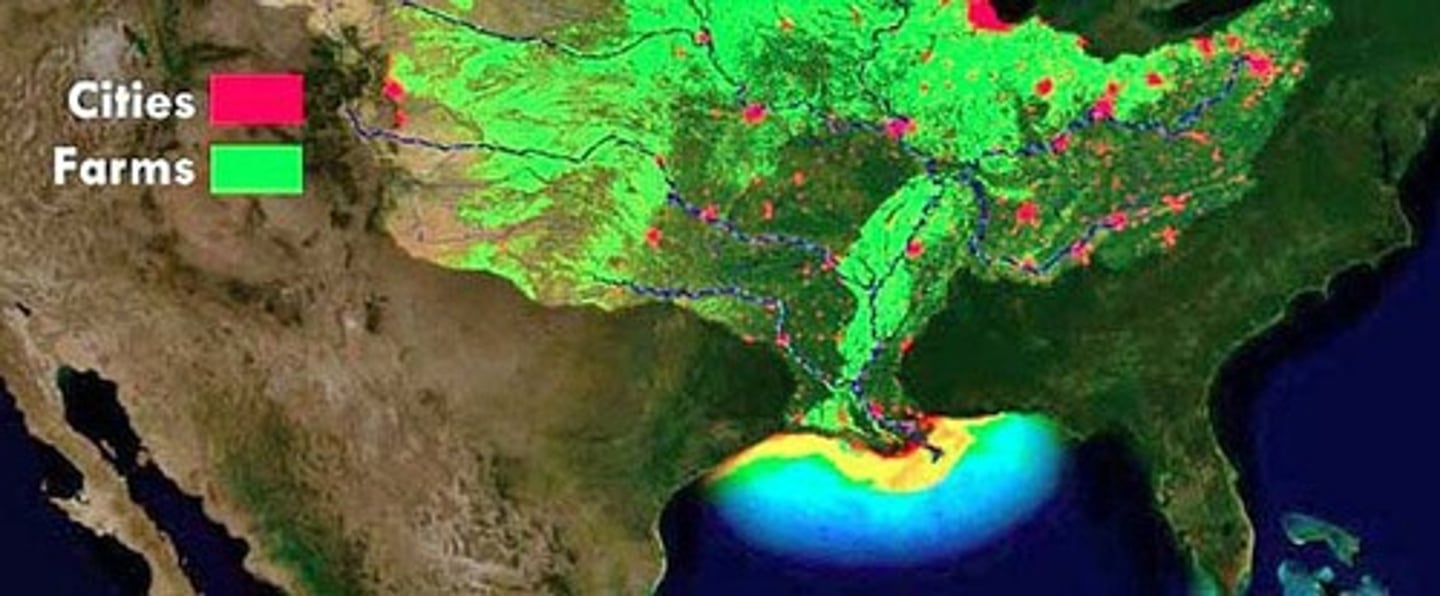
Mississippi Delta Dead Zone
Second largest dead zone, summer O2 <2 mg/L.
